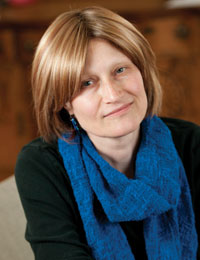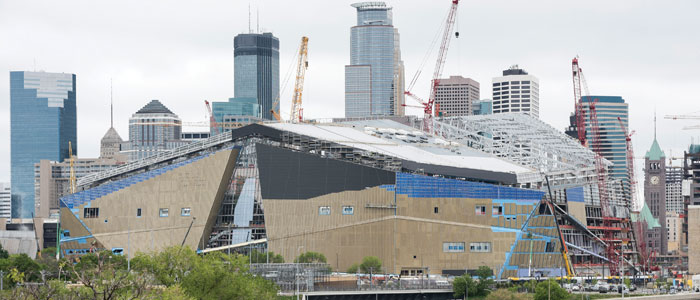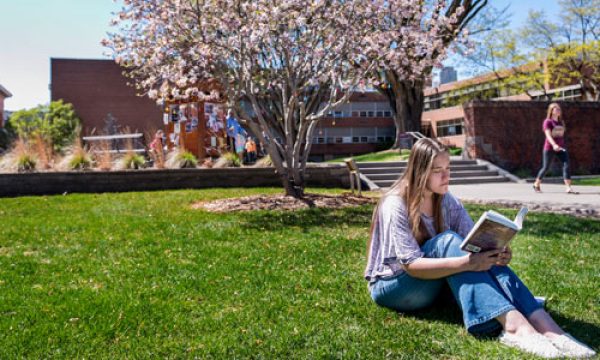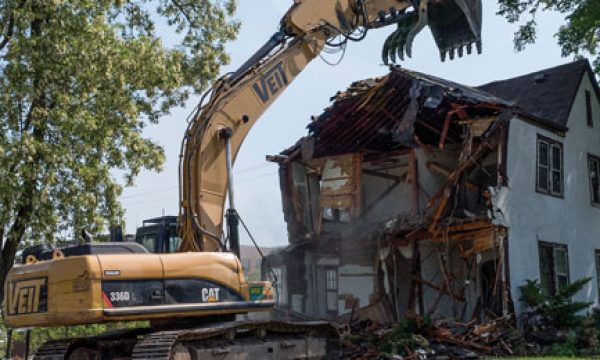
In the discipline of art history it’s common to discuss the visual representation of saints and sinners, kings and queens, and maybe even a Viking or two. At Augsburg College, Kristin Anderson teaches courses on the history of art and architecture, and she’s prepared to talk about works ranging from the Mona Lisa to the Metrodome—may it rest in peace.
Anderson’s current writing and research are focused on sports architecture, and she is co-authoring a book on the history of athletic facilities in the Twin Cities. As the St. Paul Saints baseball club settles into its new CHS Field in Lowertown and the Minnesota Vikings football team awaits the completion of a new stadium in Augsburg’s own backyard, here is Anderson’s take on the region’s shifting sports scene.
Q: During the past decade new sports venues including TCF Bank Stadium, Target Field, and CHS Field have opened their doors in Minneapolis and St. Paul. What factors have spurred so much change in such a brief period of time?
A: Quite simply, we have moved out of an era of multipurpose stadiums. They were popular in the 1960s and 1970s, and we got one of the last ones—the Hubert H. Humphrey Metrodome—in 1982. Sport-specific facilities like baseball parks and football stadiums have become the standard, and that drives all kinds of new construction. And, of course, when one team gets a new space, everyone else gets in line. …
Q: Today’s sports venues offer amenities that extend far beyond a wooden bleacher seat and a bag of popcorn sold at the concession stand. What does this mean for stadium architecture and game attendees?
A: Every new sports facility offers more than its predecessor, and fans seem to expect this improvement. The rising expectations are not new: fan amenities have been part of the discussion since the 1860s. Like us, people from that time period talked about food selection, legroom, and comfort at the games. Attending to the fan experience can add cost to a project, but it is an investment worth making. Just think about the many amazing differences between the Metrodome experience and the Target Field experience.
Q: What effect does an indoor stadium (like the new Vikings stadium) versus an outdoor stadium (like TCF) have on attendance, especially in Minnesota’s climate?
A: We have an amazing range of weather, from glorious to horrible—and we don’t always agree on which is which. This raises the stakes on decisions about stadium design. Rather than choosing “indoor” or “outdoor,” many contemporary facilities combine aspects of each. The new Vikings stadium will have a glass roof and enormous windows, bridging the indoors and outdoors in space, light, air, and views. Target Field is an outdoor ballpark, but it is designed with sheltered areas, heat lamps, and other climate-mitigating features.
Q: Baseball is said to be America’s pastime. How does new stadium architecture show that the sport can remain relevant—and sustainable—into the future?
A: While most contemporary ballparks pay homage to the history and tradition of baseball, they also employ an amazing array of cutting-edge technologies. One of the most exciting recent developments is the emphasis on environmental sustainability. Target Field has two LEED Silver certifications, and other sports facilities like the Xcel Energy Center and CHS Field have also engaged in significant sustainability efforts, including rainwater recycling systems and sophisticated trash-sorting and recycling programs.
[Top photo] While traveling to or from campus, some Auggies have near-perfect views of the construction underway on the new Minnesota Vikings football stadium. This vantage point is near the intersection of Cedar and Riverside avenues in Minneapolis.





